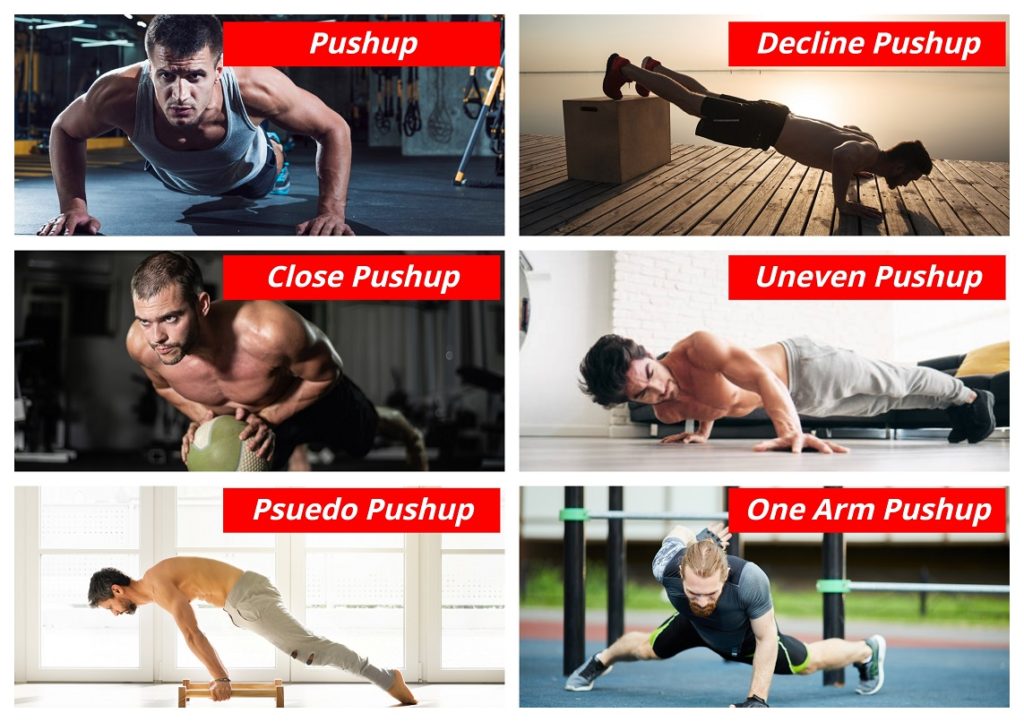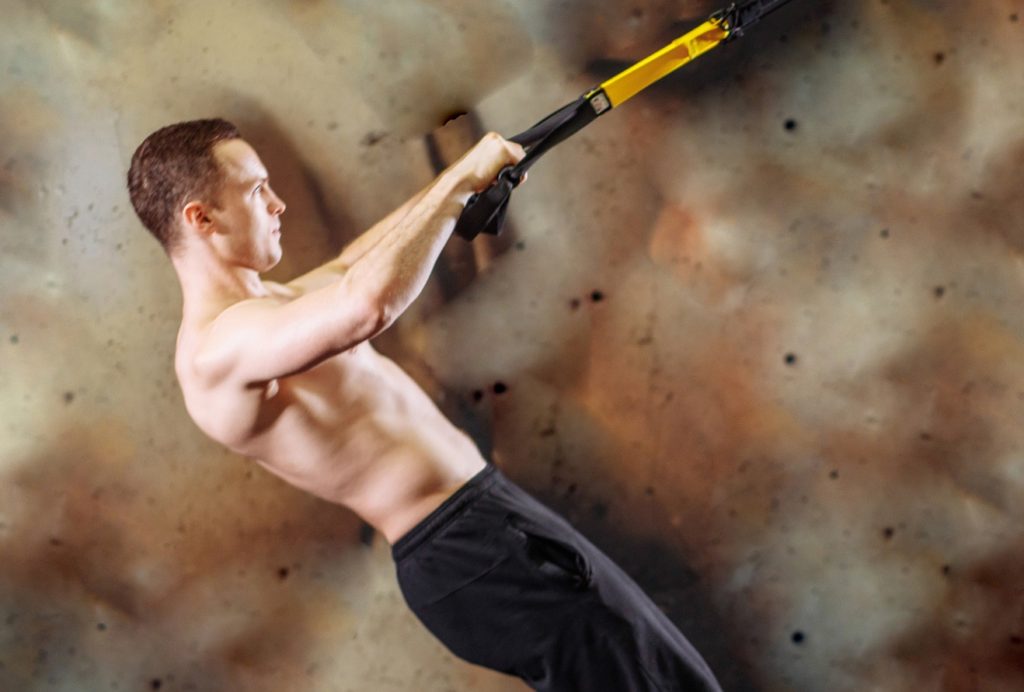Disclosure: This post contains affiliate links. Meaning if you click on a link and make a purchase, I'll earn a small commission at no extra cost to you.
If you’re looking at getting into bodyweight training for strength, then this is the most important page you’re even going to read.
Now, normally most people don’t really associate bodyweight training with strength.
In fact, when most people think of strength, they probably picture a jacked gym bro repping out barbell presses and squats and just assume that this makes them strong by way of design.
And to be fair, I used to adopt this mentality aswell. But this was back when I used to just hammer out of a few sets to get a quick pump without really being concerned with adding size or strength.
But over the years, I’ve come to realize the importance of strength training and how it affects the body.
I’ve also seen some great success in that time, focusing on just a handful of basic compound exercises. While adopting a basic strength training approach over multiple sets (more on this a little later).
And with the exception of one movement pattern, I honestly believe that your own bodyweight is all you need to start building inhuman strength that would put most people to shame.
Which is why in today’s blog post, I’m going to be unlocking the vault and revealing some of my most tried and tested methods for building strength using nothing more than your own bodyweight.
And by the time you’re done reading, you’ll be equipped with the motivation and know how to go out and smash your next strength workout with ease.
Now, before we get into the in’s and out’s of strength-based bodyweight training. I’d highly recommend checking out the Bar Brothers Program by Lazar Novovic and Dusan Djolevic. (see video below)
These guys are proof that you don’t need anything other than a pullup bar and your own bodyweight to build extreme size and strength.
And if you want to see how to build the insane strength and physical prowess of a jacked spartan warrior, then it’s well worth a few minutes of your time.
Anyway, here’s the video link to take a look: Bar Brothers – The System
(Video Will Open In A New Window)
Table of Contents
Bodyweight Training For Strength – What You Need To Know
Now, in order to get strong, it’ll come as no surprise that you have to lift heavy, right?
But more specifically, you need to work within a particular rep range that’s actually going to challenge the muscles from a strength perspective.
So just to give you a little insight, if your main focus is to purely build strength with little concern for size. Then working with a heavy load in the 3-5 rep range should be your main focus. (85-95% of your 1 rep max)
But if you’re a little more focused on size, then volume is the key, and you’ll want to up the reps on each set (6-12 reps tends to be the sweet spot here) while still keeping the load relatively heavy. (70-85% of your 1 rep max)
Now, there’s always going to be an overlap here. But as a general guide (and from personal experience), I’ve found that increases in size start to happen in strength training roughly around the 24-25 rep range.
To be clear, this is TOTAL REPS performed over multiple sets. Because let’s be honest, two sets of twelve reps aren’t really going to place enough stress on the working muscles to initiate a strength response.
So to quickly recap…
- Strength training should be performed in the 3-5 rep range over multiple sets.
- Size increases start to occur around the 24-25 rep mark. However, this isn’t set in stone, and it’ll probably vary from person to person.
- If you want to build size and strength, up the reps and reducing the weight slightly. And perform more volume (30-40 reps total) to elicit sarcoplasmic hypertrophy (size gains).

How To Use Your Bodyweight To Gain Strength
Now, as you’re probably aware, there’s a limit to how much strength you can build with basic bodyweight exercises.
For instance, a new trainee who can only perform, let’s say, 3 pullups before hitting muscular failure is going to see huge initial increases in strength.
However, as they start to get stronger and more experienced, they’ll quickly surpass this benchmark.
And as they start to reach double digits in their pullup numbers (10+ reps), the strength benefits will become less and less obvious because they’re now unable to reach muscular failure within the 3-5 rep range.
So what can you do?
Well, the first thing you can do is to use leverage to your advantage (or disadvantage in this case), by positioning your body in such a way that it places a greater load on the specific muscle being worked.
For example, if I wanted to make pushups harder. I could simply impliment harder pushup progressions like uneven pushups, pseudo pushups, or, dare I say, even one-arm pushups.
This way, you’ll constantly be challenging the muscles by placing a greater load on them to keep the body guessing.
Here’s an example of a few pushups progression to get you started… (see image)

So the other way you can make ANY bodyweight exercise harder is to simply add weight.
Now, when I say add weight, I’m talking about strategically loading simple bodyweight movements that would otherwise prove easy…
…Into heavy-duty exercises that take the iron will of a spartan warrior to execute.
This can be done with a weighted vest, dip belt, throwing a small child on your back. The tool doesn’t matter.
What matters is that you’re providing more stress to the working muscles, which in turn is going to make the exercise harder while building more strength in the process.
To give you an example, I’m a huge fan of performing pullups and dips as a superset.
So what I do whenever I’m performing weighted work is add anywhere from 55-65 pounds to a dip belt and perform 5 pullups (or chinups)…
…Followed immediately by throwing on a weighed backpack with an extra 45-pounds and performing 5 parallel bar dips.
This way, I can keep the load heavy while transitioning between exercises without too much trouble.

The Perfect Bodyweight Strength Training Program
So the workout below is a full-body workout I like to use whenever I’m specifically training for strength.
Better still, it only uses 6 exercises that can be performed as either supersets or straight sets.
The list of exercises are as follows…
- Weighted Pullups
- Weighted Parallel Bar Dips
- Weighted Pushups
- Weighted Inverted Rows
- Split Squats (rear foot elevated while wearing a weighted vest)
- Deadlifts (not a bodyweight exercises but a great hinge movement for building full-body strength)
Now, there are multiple ways I like to impliment this workout, depending on my training goals for that day.
But when training specifically for strength, I generally like to use a combination of straight sets and supersets like this…
Superset:
- Weighted Pullups
- Weighted Parallel Bar Dips
Perform 3-5 reps per set until you hit 25 total reps
Straight Set:
- Deadlifts
Perform 3-5 reps per set until you hit 25 total reps
Superset:
- Weighted Inverted Rows
- Weighted Pushups
Perform 3-5 reps per set until you hit 25 total reps
Straight Set:
- Weighted Split Squats (right leg forward)
- Weighted Split Squats (left leg forward)
Perform 3-5 reps per set (on each leg) until you hit 25 total reps.
The important thing to remember here is that it doesn’t matter how many sets it takes you to reach the total 25 rep count.
As long as you’re pushing hard and not cheating yourself, then your body will respond the way you want it to.

Mixing Things Up For Better Results
Even though the above workout is awesome, it’s also very taxing on the central nervous system (CNS). And performing it too often is going to wreak havoc on your body.
So to mix things up (and to also keep the body guessing), I like to take the same set of exercises and occasionally (1-2 times a week) turn them into a fast-paced, mini circuit to get the blood pumping and give my cardiovascular system a thrashing.
Obviously, you’ll need to lower the weight, but it’s a killer workout that ticks all the boxes.
Better still, it only takes around 25 minutes to complete. Provided you go balls to the wall and give it all you’ve got.
Anyway, here it is for your enjoyment…
Mini Circuit 1:
- Weighted Pullups (6 reps)
- Weighted Parallel Bar Dips (10 reps)
- Deadlift (6 reps)
Rest 1 minute and repeat 3 more times (4 rounds total)
After the last set, rest for 3 minutes and then go straight into…
Mini Circuit 2:
- Weighted Inverted Row (max reps)
- Weighted Pushups (max reps)
- Weighted Split Squats (10 reps each side)
Rest 1 minute and repeat 2 more times (3 rounds total)
Now, the trick with this workout is to use a weight that’s moderately heavy but doesn’t let you reach muscle failure until that last set.
To give you a rough guideline, I like to load both the weighted pullups and deadlifts with a weight I can perform around 10 reps with on my first set.
But instead of repping out until failure, I’ll stop at six as this will allow me to keep the momentum going between exercises without burning out completely.
As for the second circuit, I’ll usually throw on a weighted vest that allows me to perform around 12-14 reps of split squats on my first set and use that same weight to max out on my pushups and rows.
I won’t lie. It’s a hard fast-paced workout. But the key here is to be able to transition between movements as seamlessly as possible to keep the heart rate elevated.
It’s a little tricky with the first mini circuit because you have to remove the dip belt every time before performing the deadlifts.
But other than that, I think you’ll find it to be a beast of a workout that holds no prisoners.

Taking Your Bodyweight Workout To The Next Level
Anyway, hopefully, this has given you a few things to think about when it comes to bodyweight training for strength.
There are literally dozens of ways you could impliment the above workout to suit your own specific needs. So don’t feel like you have to follow the exact instructions to the letter.
At the end of the day, everybody responds differently to exercise. And what works for me might not work for you.
So if this means changing up the order of exercises, sets, or rest periods. Then, by all means, go for it and see what happens.
Now, this is only a small piece of the puzzle when it comes to bodyweight training, and you’d be amazed at how far you can progress if you’re willing to put in the time and effort.
However, if you want a PROVEN program that’s going to take your bodyweight training to the next level and beyond, then I’d highly recommend checking out the Bar Brothers Program.
Again, this is a one of a kind program created by the best in the business (Lazar Novovic and Dusan Djolevic).
And I guarantee that if you listen, learn, and more importantly, implement what these guys teach in this epic program. You’ll be well on your way to getting the results you want from bodyweight training sooner rather than later.
Anyway, I’m not going to overhype or oversell anything here because it’s not really my style. And I’d rather you just take a look at the program for yourself to see if it’s a good fit for your training goals.
So before I wrap this post up and you hit the back button on your browser, go ahead and take a look by hitting the video link below.
Until next time…
(Video Will Open In A New Window)

